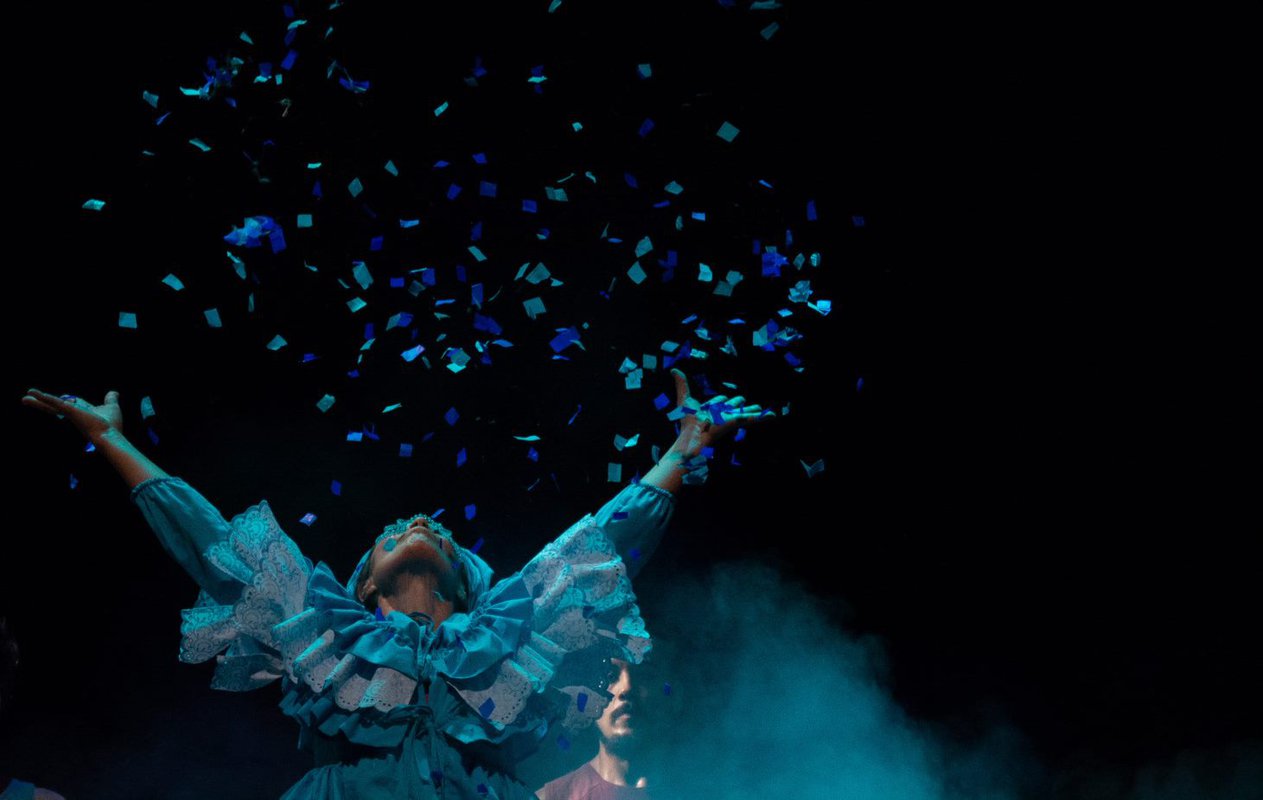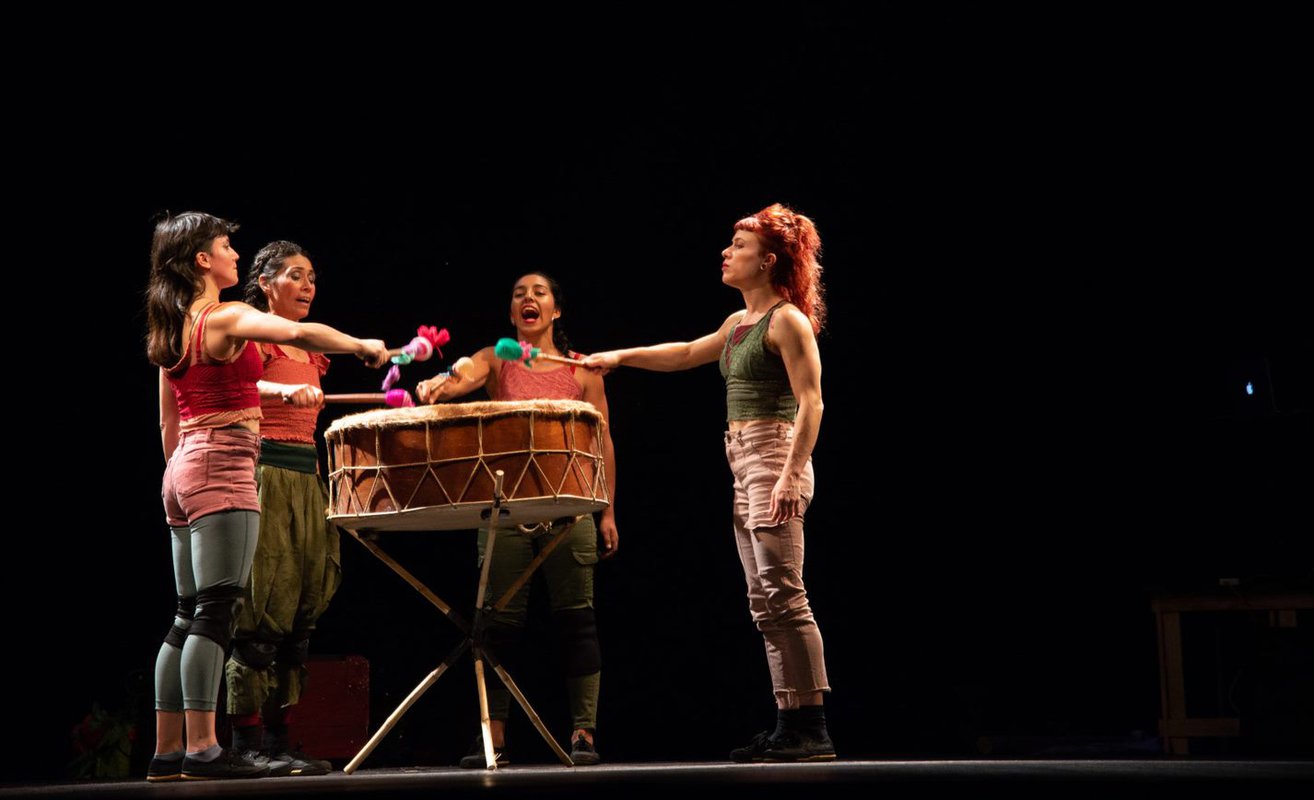Teatro físico | Nuevo circo
Written and directed by: Martín Erazo and Leandro Mendoza | Assistant director: Francisca Arce | Cast: Francisca Arce, Gloria Salgado, Francisca Artaza, Valentina Peralta, Alex Carreño, Matias Burgos and Juan Ferino | Musical score: Alejandra Muñoz | Set design: Ulrich Weigel | Set construction: Taller La Patogallina | Press and publicity: José Arroyo | Produced by: Minga Producción Escénica.
Martín Erazo
A prolific director
Founder and artistic director of the Colectivo La Patogallina, codirector and cofounder of the audio intervention company Teatro del Sonido, codirector of FITKA (the Street Theater Festival) and director of the performing arts festival Festine de Isla Negra, he’s held workshops, seminars and theater, acting, self-management, improvisation and theatrical creation conferences both in Chile and abroad. He’s also directed performances in Mexico, Ecuador and Colombia. In Chile, he’s directed large-scale shows, such as the opening of the Altazor Awards, the name-changing ceremony of the Víctor Jara Stadium, the closing ceremony of Santiago a Mil 2015 with the show El gramófono and the inauguration of Santiago a Mil 2017 with Sin fronteras.
Leandro Mendoza
Leandro Mendoza
A Catalan circus consultant
This director, artist, technician and circus constructor is the artistic director of the Trapezi, Fira del Circ de Catalunya Festival. In 2001, he created the Curtcirkit de Montgat Festival (Barcelona) and he was one of the people behind the Circ de Nadal de Vilanova i la Geltrú, a residency center for circus companies. Between 2008 and 2012, he was technical designer and artistic director of La Central del Circ in Barcelona. In 2009, he founded Cíclicus, putting on shows such as Retalls (2013), La Tartana (2014) and Pals (2015) and winning the Jury’s Choice award at the Zirkolika Awards that same year. Mendoza has also directed the natural fiber circus show El Guadual (2016), a Teatro Sánchez Aguilar in Guayaquil coproduction.
—Martín Erazo is an authority on anything physical and theatrical, as well as on stage design. All of his projects with La Patogallina involve painstaking visuals, both as far as their design as well as their costumes, masks and music are concerned. He has been involved with street theater classics such as El húsar de la muerte, Haim, 1907 el año de la flor negra and Paloma ausente, as well as with a huge number of street intervention projects, passacaglias and large-scale events.
—Leandro Mendoza is a true representative of new Catalan circus, a discipline that, while maintaining the traditional roots of Catalan circus, embarked on a new path, establishing a close relationship with other artistic styles. Almost 40 years after it emergence, Catalan circus exists in three of the countries the art form originally emanated from: France, Canada and the United States.
—It’s an interpretation that’s loosely based on Memoria del fuego, perhaps the most comprehensive and ambitious piece written by Uruguayan Eduardo Galeano. In its three volumes, written between 1982 and 1986, he tries to tell the story of the continent both metaphorically and based on evidence.
—Physical theater: This is a kind of theater based on the body’s expressive and communicational abilities, in performances whose aim is to tell a story using corporality. Its roots are in Japanese nō theater, Italian commedia dell’arte, circus acts, certain types of Asian theater and mime. Its modern-day version is usually said to date from the first half of the twentieth century.
—New circus: Also called contemporary circus (nouveau cirque in French), this performing arts genre - developed in the middle of the twentieth century - is characterized, among other things, by basing itself on a story told through different circus acts and disciplines. The focus is on making an esthetic impact and on a performance that tells a story, sometimes using theater techniques as well.
—Find out more about Cíclicus in this extract from their play Pals.
—Listen to Teatroamil.tv’s interview with Martín Erazo, in which he talks about the milestones of his career with La Patogallina.
—If you want to find out more about contemporary circus, watch this explanatory video made by Matucana 100, with a voiceover by Macarena Simonetti, director of the Charivari Festival.
On Instagram, @lapatogallina | @ciclicus
On Twitter, @La_PatoGallina | @cicliclus
On Facebook, colectivo.lapatogallina | Cíclicus-Espectacles
PRODUCE
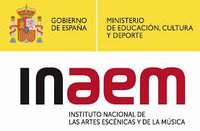

PRESENTA

PRODUCE
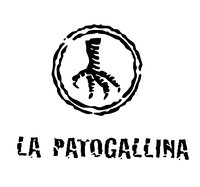
COLABORA
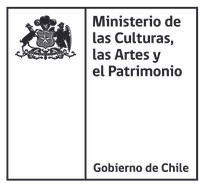
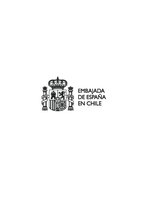
Fuego Rojo
By La Patogallina and Cíclicus
- Chile
- Spain
- Spanish
- 60 minutes
- Todo público
The mythology, traditions and rites of America are turned into physical theater and contemporary circus in this joint Chilean-Catalan coproduction.
In this rustic opera that appears in front of the audience like a mirage, a funeral turns into a pagan festival; a coffin becomes a portal through which the voices of Atahualpa, the last Incan emperor and Jemanya, goddess of fertility, echo; the rites of yawar (the Festival of Blood) and roadside shrines appear. Physical theater and contemporary circus blend together to bring a series of dreamlike passages to life in a theatrical style involving objects, poetic images and live music.
Fuego rojo is a show from the Chilean La Patogallina and Catalan Cíclicus companies. It’s based on the Memoria del fuego trilogy by Uruguayan Eduardo Galeano, which brings into contention memory and current affairs. It’s a piece that asks questions can’t be answered, such as how much of our past have we lost, how much of it lives on in us today and if it’s possible to reconnect with these memories.
Fuego Rojo
By La Patogallina and Cíclicus
- Chile
- Spain
- Spanish
- 60 minutes
- Todo público
The mythology, traditions and rites of America are turned into physical theater and contemporary circus in this joint Chilean-Catalan coproduction.
In this rustic opera that appears in front of the audience like a mirage, a funeral turns into a pagan festival; a coffin becomes a portal through which the voices of Atahualpa, the last Incan emperor and Jemanya, goddess of fertility, echo; the rites of yawar (the Festival of Blood) and roadside shrines appear. Physical theater and contemporary circus blend together to bring a series of dreamlike passages to life in a theatrical style involving objects, poetic images and live music.
Fuego rojo is a show from the Chilean La Patogallina and Catalan Cíclicus companies. It’s based on the Memoria del fuego trilogy by Uruguayan Eduardo Galeano, which brings into contention memory and current affairs. It’s a piece that asks questions can’t be answered, such as how much of our past have we lost, how much of it lives on in us today and if it’s possible to reconnect with these memories.
Written and directed by: Martín Erazo and Leandro Mendoza | Assistant director: Francisca Arce | Cast: Francisca Arce, Gloria Salgado, Francisca Artaza, Valentina Peralta, Alex Carreño, Matias Burgos and Juan Ferino | Musical score: Alejandra Muñoz | Set design: Ulrich Weigel | Set construction: Taller La Patogallina | Press and publicity: José Arroyo | Produced by: Minga Producción Escénica.
Martín Erazo
A prolific director
Founder and artistic director of the Colectivo La Patogallina, codirector and cofounder of the audio intervention company Teatro del Sonido, codirector of FITKA (the Street Theater Festival) and director of the performing arts festival Festine de Isla Negra, he’s held workshops, seminars and theater, acting, self-management, improvisation and theatrical creation conferences both in Chile and abroad. He’s also directed performances in Mexico, Ecuador and Colombia. In Chile, he’s directed large-scale shows, such as the opening of the Altazor Awards, the name-changing ceremony of the Víctor Jara Stadium, the closing ceremony of Santiago a Mil 2015 with the show El gramófono and the inauguration of Santiago a Mil 2017 with Sin fronteras.
Leandro Mendoza
Leandro Mendoza
A Catalan circus consultant
This director, artist, technician and circus constructor is the artistic director of the Trapezi, Fira del Circ de Catalunya Festival. In 2001, he created the Curtcirkit de Montgat Festival (Barcelona) and he was one of the people behind the Circ de Nadal de Vilanova i la Geltrú, a residency center for circus companies. Between 2008 and 2012, he was technical designer and artistic director of La Central del Circ in Barcelona. In 2009, he founded Cíclicus, putting on shows such as Retalls (2013), La Tartana (2014) and Pals (2015) and winning the Jury’s Choice award at the Zirkolika Awards that same year. Mendoza has also directed the natural fiber circus show El Guadual (2016), a Teatro Sánchez Aguilar in Guayaquil coproduction.
—Martín Erazo is an authority on anything physical and theatrical, as well as on stage design. All of his projects with La Patogallina involve painstaking visuals, both as far as their design as well as their costumes, masks and music are concerned. He has been involved with street theater classics such as El húsar de la muerte, Haim, 1907 el año de la flor negra and Paloma ausente, as well as with a huge number of street intervention projects, passacaglias and large-scale events.
—Leandro Mendoza is a true representative of new Catalan circus, a discipline that, while maintaining the traditional roots of Catalan circus, embarked on a new path, establishing a close relationship with other artistic styles. Almost 40 years after it emergence, Catalan circus exists in three of the countries the art form originally emanated from: France, Canada and the United States.
—It’s an interpretation that’s loosely based on Memoria del fuego, perhaps the most comprehensive and ambitious piece written by Uruguayan Eduardo Galeano. In its three volumes, written between 1982 and 1986, he tries to tell the story of the continent both metaphorically and based on evidence.
—Physical theater: This is a kind of theater based on the body’s expressive and communicational abilities, in performances whose aim is to tell a story using corporality. Its roots are in Japanese nō theater, Italian commedia dell’arte, circus acts, certain types of Asian theater and mime. Its modern-day version is usually said to date from the first half of the twentieth century.
—New circus: Also called contemporary circus (nouveau cirque in French), this performing arts genre - developed in the middle of the twentieth century - is characterized, among other things, by basing itself on a story told through different circus acts and disciplines. The focus is on making an esthetic impact and on a performance that tells a story, sometimes using theater techniques as well.
—Find out more about Cíclicus in this extract from their play Pals.
—Listen to Teatroamil.tv’s interview with Martín Erazo, in which he talks about the milestones of his career with La Patogallina.
—If you want to find out more about contemporary circus, watch this explanatory video made by Matucana 100, with a voiceover by Macarena Simonetti, director of the Charivari Festival.
On Instagram, @lapatogallina | @ciclicus
On Twitter, @La_PatoGallina | @cicliclus
On Facebook, colectivo.lapatogallina | Cíclicus-Espectacles
PRODUCE


PRESENTA

PRODUCE

COLABORA


